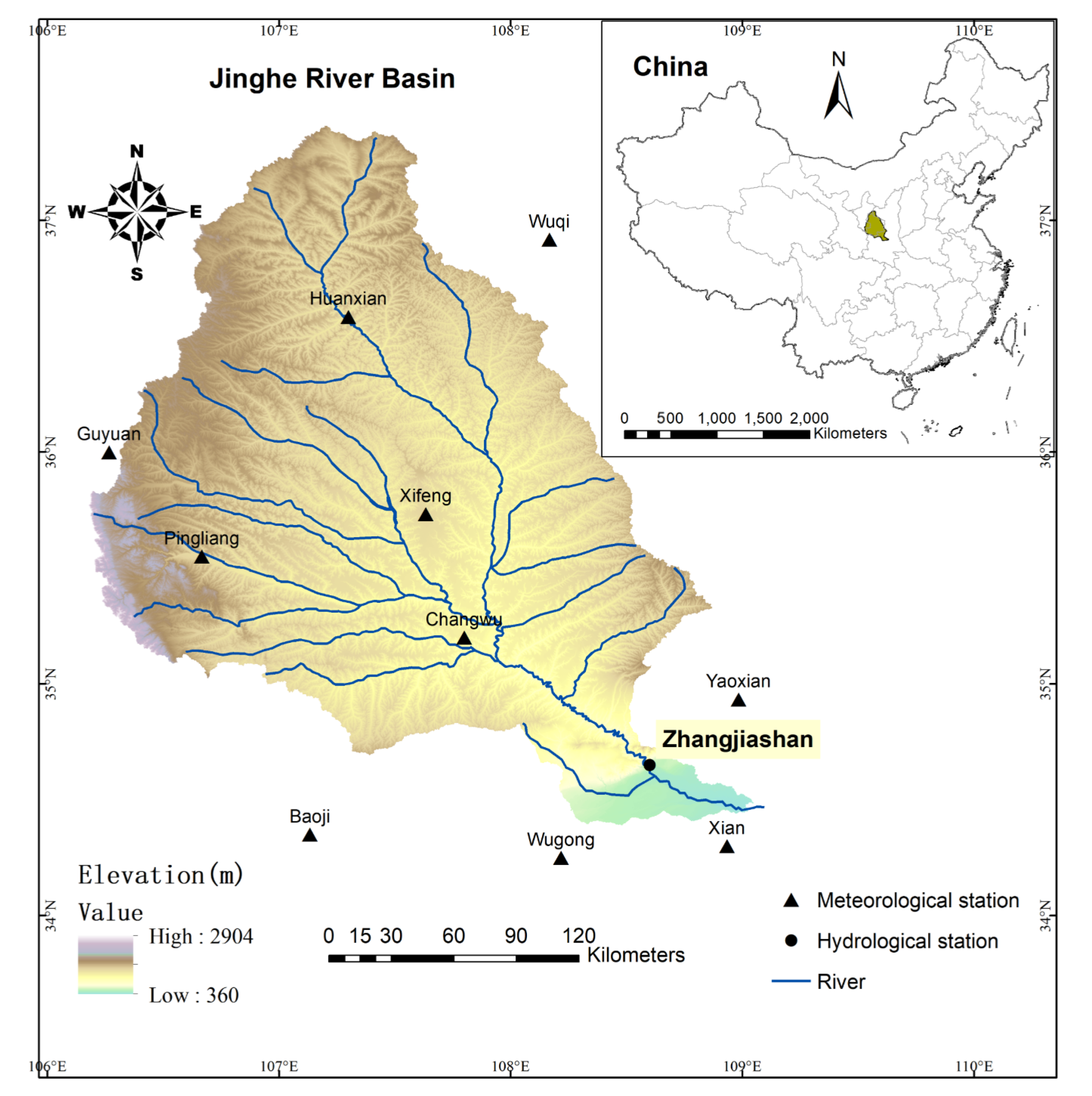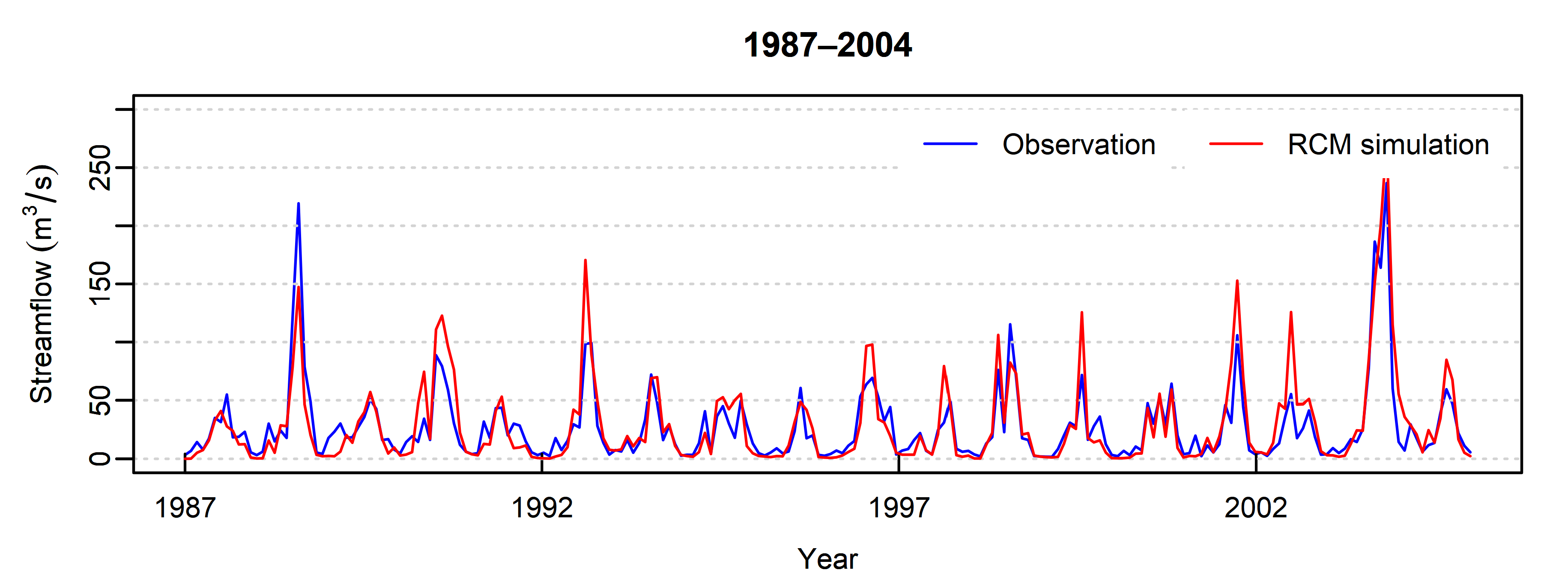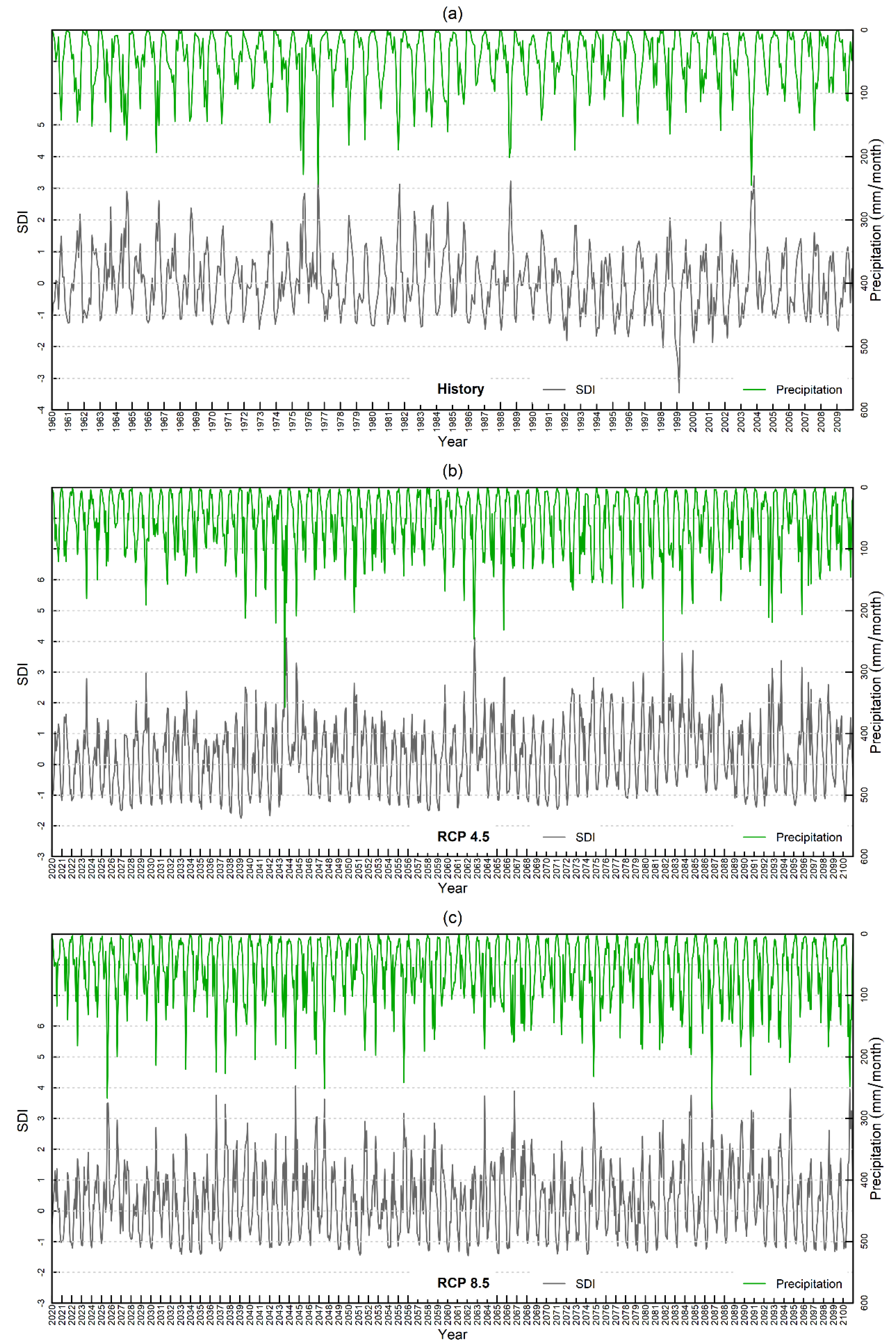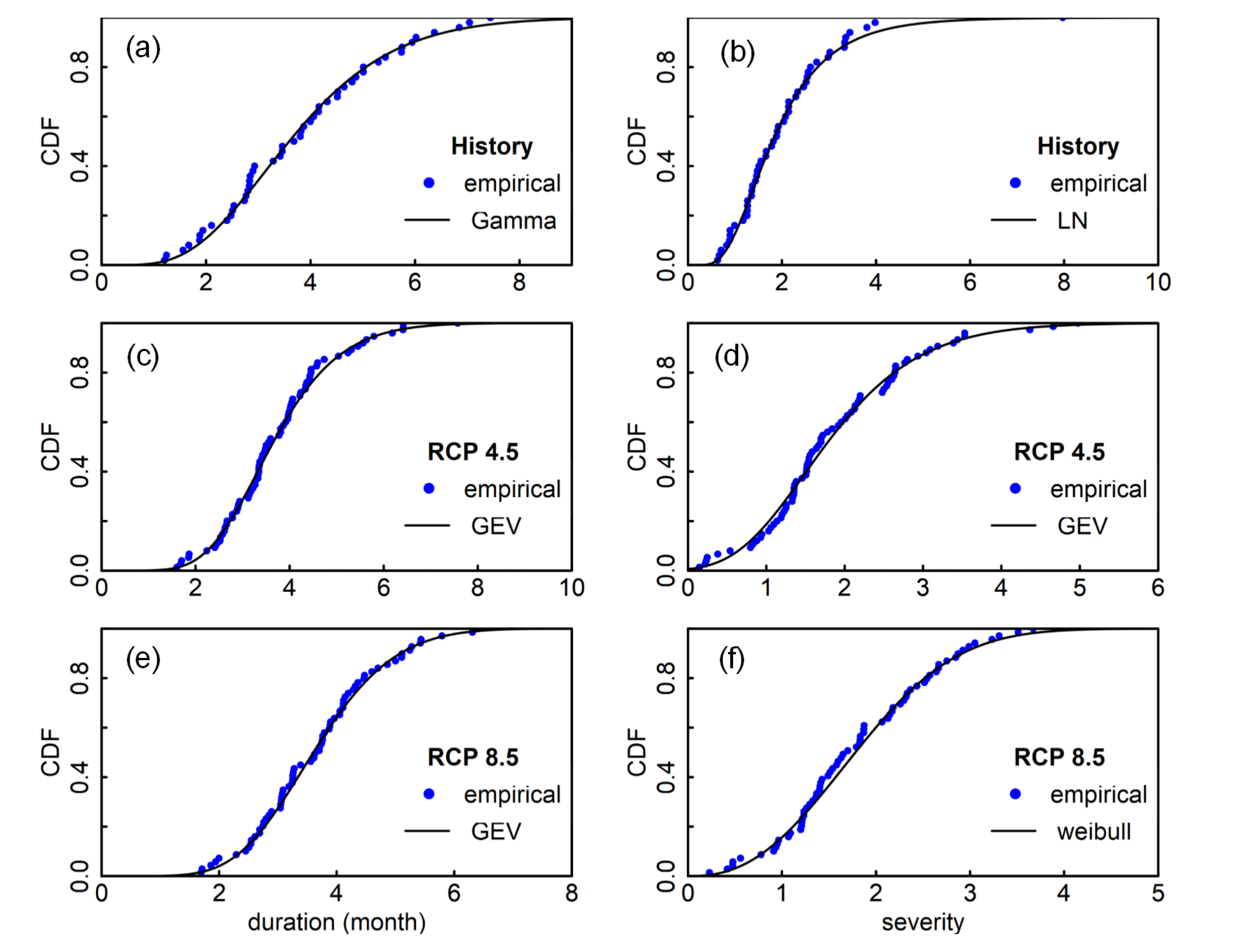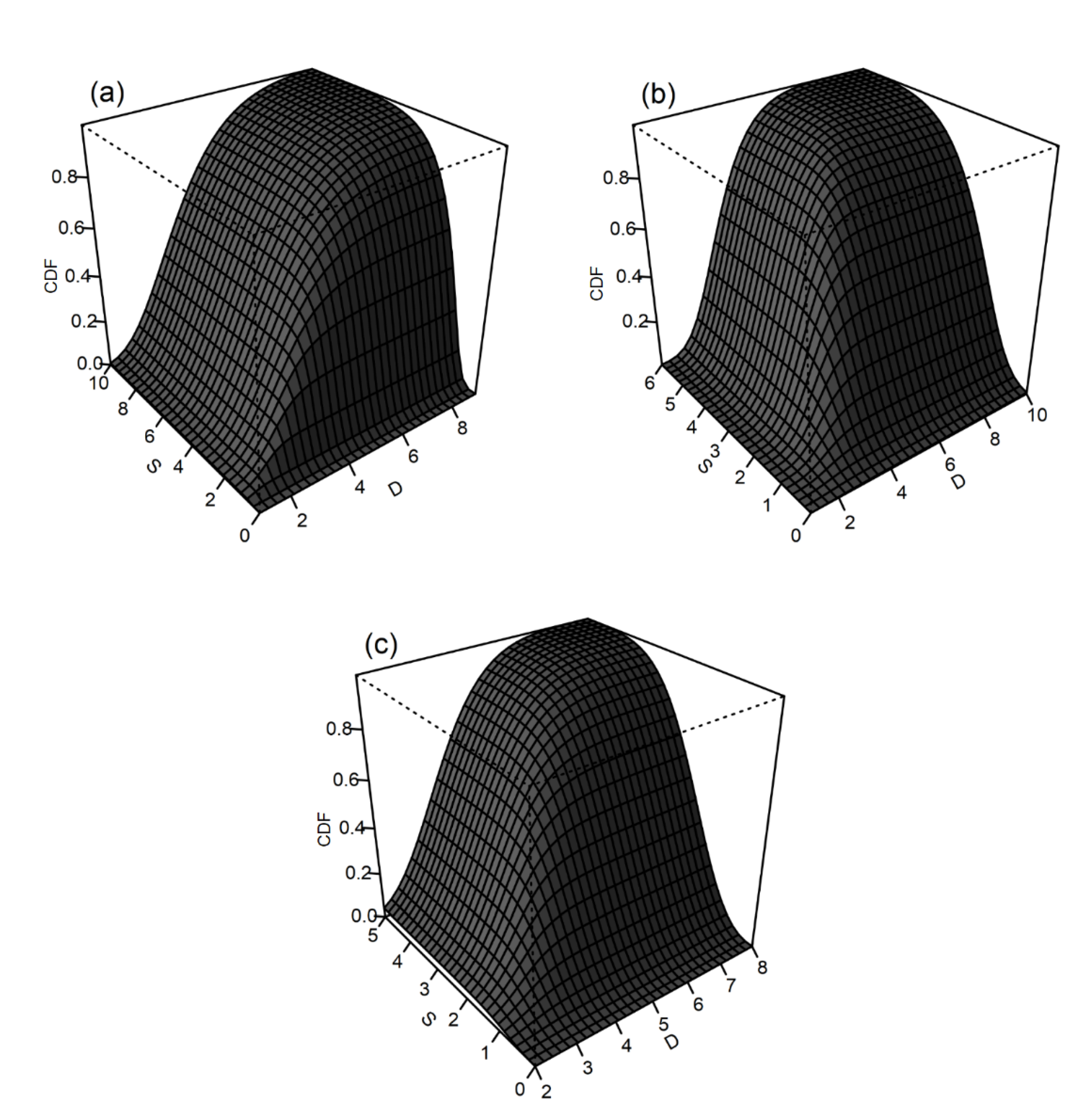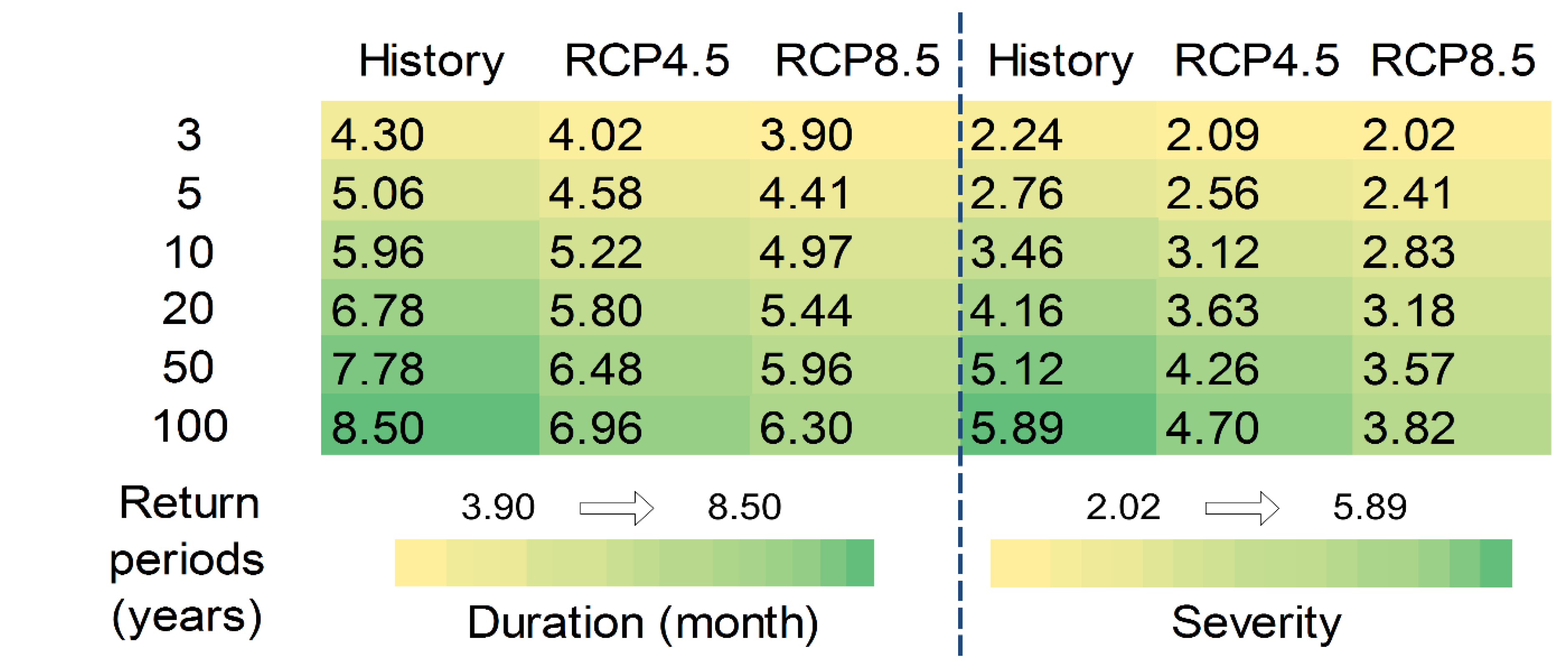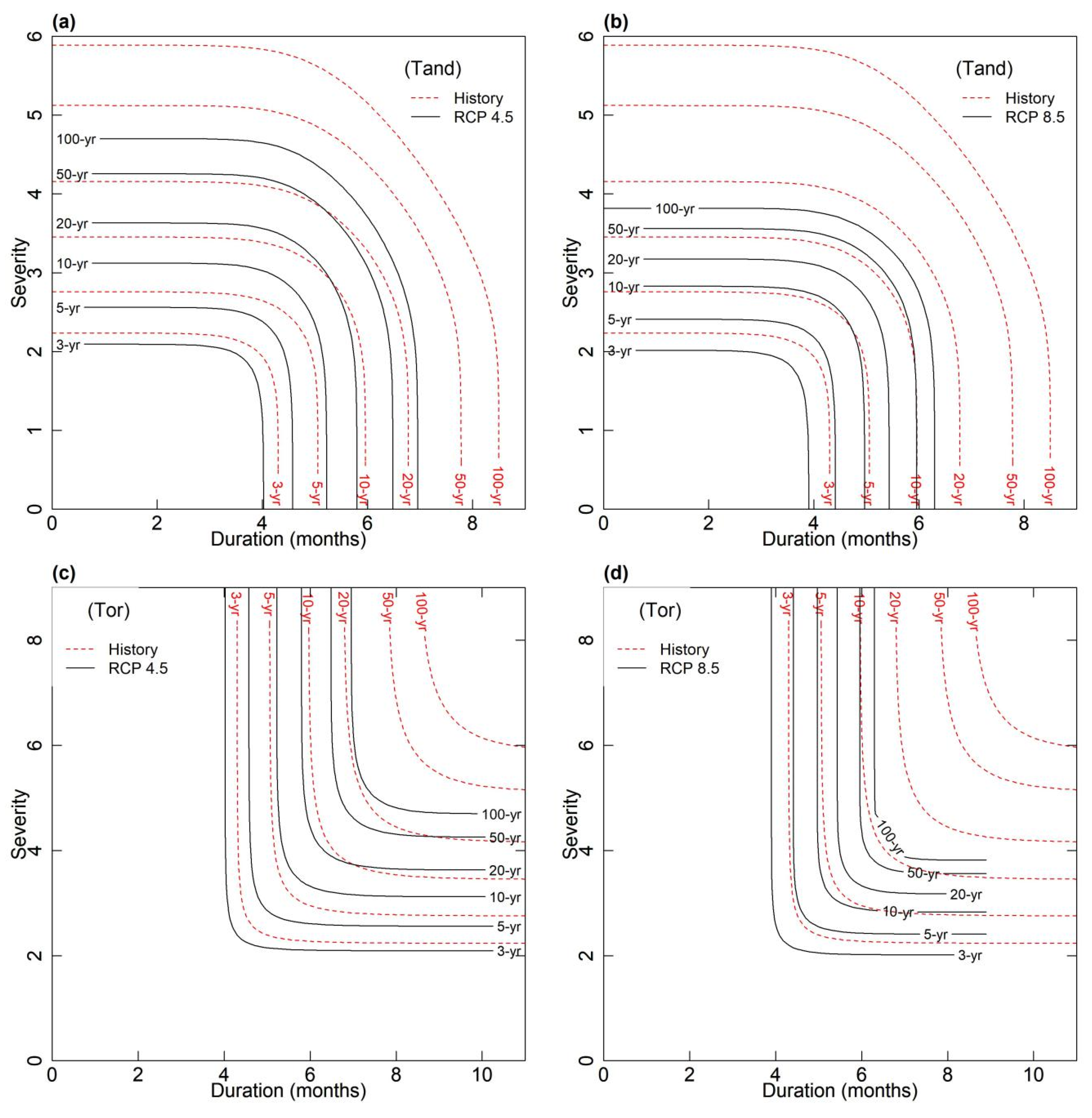1. Introduction
Drought and water scarcity (WS) are inevitable research topics for water resource management in water-stressed areas [
1,
2,
3]. Drought is a natural disaster that affects a large number of people and causes huge economic losses in the world [
4,
5]. WS is usually caused by the combined effects of natural factors and excessive water uses of human beings, and has already become a vital obstacle for socio-economic development in many parts of the world [
6]. In the context of global climate change, many traditional arid regions may experience more severe drought events in the future, which have even been observed in the past few years [
7,
8,
9]. Moreover, due to the increase in population and the improvement of living standards, water usage is significantly growing, which will result in massive WS in numerous regions in the future [
2,
10,
11]. Consequently, it is desired to explore the severity of drought and further reveal the associated WS under climate change in order to manage water resources reasonably and meet the needs of sustainable development [
6,
11].
Drought can be classified from meteorology, agriculture, hydrology and socioeconomic aspects [
12]. Among the four types of drought, hydrological drought (HD) can characterize the reduction of water resources in the terrestrial phase of hydrological cycles such as rivers, lakes and reservoirs [
13]. A series of HD indicators, such as streamflow drought index (SDI) and standardized runoff index (SRI), have been developed to quantitatively assess the severity of hydrological drought [
13,
14]. In addition, given the fact that a drought event generally has multiple attributes such as duration and severity, researchers are more inclined to study the relationship between those attributes and their joint risk levels to provide comprehensive characterization for drought events [
15,
16]. Due to the flexibility of establishing marginal and joint distributions, copula-based methods are widely used in joint risk inferences for droughts in a multivariate context in recent years [
17,
18,
19,
20].
Hydrological drought can indicate the natural decline of water resources compared to past records. However, it cannot reflect the pressure of water scarcity (WS). Therefore, it is necessary to adopt appropriate methods to identify and assess the WS or water stress conditions. Numerous indicators have been developed to help identify and characterize water scarcity areas across the globe. These indicators include, for example, the ratio of water withdrawal or population size to renewable water, and the ratio of water demand or water consumption to available water [
21,
22,
23,
24]. Among these indicators, Water Exploitation Index (WEI) is widely used to describe the WS status in European Union countries [
2,
24,
25]. WEI evaluates the ratio of total annual freshwater extraction to long-term average renewable resources, and addresses pressure on water resources from all water sectors in the study area. Rather than concentrating on the annual average WS and mainly used in national scale for the WEI, the more advanced Water Exploitation Index Plus (WEI+) takes into account the water return component and has been given more attention in studying the interannual changes in WS of river basins [
26,
27,
28].
Although there are numerous studies on HD, there is a lack of research on the future multivariate risk of HD under climate change. In addition, the study of WS often requires a large amount of hydrological data, especially for the river basins across many administrative regions, which limits the study of WS (including future WS) in data-lacked watersheds. HD and WS can, respectively, reflect the degree of water shortage from the perspective of nature and human demand. It should be noted that the assessment of WS may be over optimistic if only the richness of future water resources is adopted based on drought indicators without considering water use factors [
29]. Therefore, it is extremely important to comprehensively assess the possible development trend of HD and WS in the future. In recent years, the methods of coupling regional climate model (RCM) and hydrological model are widely used to simulate the future runoff of river basins [
30,
31,
32]. For example, Hurkmans et al. [
30] and Wan et al. [
31] have applied bias-corrected RCM outputs to drive hydrological models and produce runoff series under different Representative Concentration Pathway (RCP) scenarios in the future. These studies provide good pathways for studying the HD and WS in the future.
The main purpose of this study is to establish a modeling framework, which allows us to estimate the multivariate risk of HD variables, and also provide quantitative analyses for WS. In detail, the constructed model framework contains the following modules to achieve these goals: (i) a combined climate and hydrological system to project future runoff under different climate scenarios; (ii) a copula-based model for multivariate risk assessment of HD; (iii) the WEI+ indicator to estimate future WS. The developed modeling framework is applied to Jinghe River Basin (JRB) of China. The univariate and bivariate risk of HD variables and the WS degrees in various water consumption scenarios will be obtained over the JRB under climate change. The comprehensive evaluation results of HD and WS can help decision-makers to make perspective long-term water use plans and take measures to reduce losses that may be caused by drought in the future.
2. Study Area and Data
The Jinghe River Basin (JRB, lies between 34°46′ N to 37°19′ N and 106°14′ E to 108°42′ E) is located in the central part of Loess Plateau in China (
Figure 1), with a total drainage area of 45,412 km
2. The JRB flows across three provinces (Ningxia, Gansu and Shanxi) from northwest to southeast, and has a typical temperate continental climate. The annual average temperature in JRB ranges between 8 and 10 ℃, and the average annual precipitation varies from 350 to 650 mm. Frequent droughts coupled with over-exploitation of water resources have caused serious water shortages in this area.
Observed daily meteorological data of precipitation, maximum temperature (Tmax), minimum temperature (Tmin), and wind speed with time period of 1960–2009 at 10 meteorological stations (located in and around the JRB,
Figure 1) were obtained from the China Meteorological Administration. Gridded regional climate model data (RegCM driven by GFDL-ESM2M global climate model outputs [
33,
34,
35]) of daily precipitation, Tmin, Tmax and wind speed at a 0.44-degree resolution under historical (1985–2004) and future periods (2020–2099 under scenarios of RCP4.5 and RCP8.5) were collected from China Climate Change Data Portal (
http://chinaccdp.org/). The climate projections are bias-corrected using the Quantile Mapping method [
36], and all climate data are interpolated to a resolution of 0.22 degrees through the Inverse Distance Weighted (IDW) interpolation method [
37].
Observed daily runoff data of 1960–2009 at Zhangjiashan hydrometric station (
Figure 1) were obtained from the National Earth System Science Data Center (
http://loess.geodata.cn/). The annual runoff, annual renewable water and water resources changes between 2000 and 2017 were obtained from Water Resources Bulletins of Ningxia, Gansu, and Shaanxi provinces. Three categories of geographic information data were used for the hydrological model: the digital elevation model data with 90 m resolution were collected from the Shuttle Radar Topography Mission (SRTM); the land cover data at 1 km resolution were achieved from the Global Land Cover Production of University of Maryland [
38]; the soil type data at 30 arc second resolution were collected from Food and Agriculture Organization [
39].
5. Conclusions and Discussions
The presented modeling framework in this study allows us to estimate the univariate and joint risks of hydrological drought variables, and also provide quantitative analyses for water scarcity under climate change. The WEI+ index was innovatively applied to evaluate water scarcity in an arid basin (JRB) of China under climate change. Lower frequency with lower mean duration and severity of HD events were identified under RCP8.5 scenario than those characterized under the RCP4.5 scenario. HD duration and severity under both RCP scenarios are projected to decrease remarkably when compared to those in the past. The copula-based bivariate HD risk assessment model also reveals that climate change under projected future scenarios would alleviate drought situation in the JRB. However, the WS assessment results show that the shortage of water resources in JRB is still severe in the future.
Drought indicators can flexibly evaluate the degree of water resources deviating from normal at different time scales, such as the monthly SDI estimated in this study. The developed modeling framework has important implications for HD risk management. However, drought assessment can only reflect the relative changes of water resources in a natural state, without taking into account water consumption changes in the future. Therefore, simply assessing the severity of future droughts cannot accurately reflect the severity of water shortages, and decision-makers cannot provide valuable water resources management policies. Considering the increase in human water consumption in the future, the degree of water shortage may not be alleviated by the increase in precipitation and water availability. This makes it necessary to introduce quantitative assessment methods for future water scarcity evaluation.
Although setting thresholds for the WEI+ is still debatable, the authors suggest that the WEI+ thresholds for the basin should be set based on different environmental protection objectives and economic development goals. Moreover, an obvious disadvantage of the WEI+ indicator is the lack of consideration of water quality, which is closely related to the quality of “return water” (exploited and re-entered into the hydrological cycle). The WEI+ may be improved or different WS assessment methods can be used to comprehensively assess water stress and water quality in the future. However, a river basin often covers several provinces, and the conditions of water use are complex, which requires the relevant departments to do a more collaborative job on basic data statistics. The results of this study are of great significance for policy makers and local stakeholders to make a prospective long-term plan. Based on the assessment of future drought and water shortage status, an appropriate plan can be made to support the sustainable development of social economy. This research is repeatable and can be used in other basins in traditional arid or semi-arid areas. In addition, due to the increase in population and the acceleration of urbanization, the water shortages in large cities and their surrounding areas in some developed countries are becoming increasingly severe, and some water-rich countries have also experienced WS events in recent years. The presented modelling system can also be applicable in such areas.
